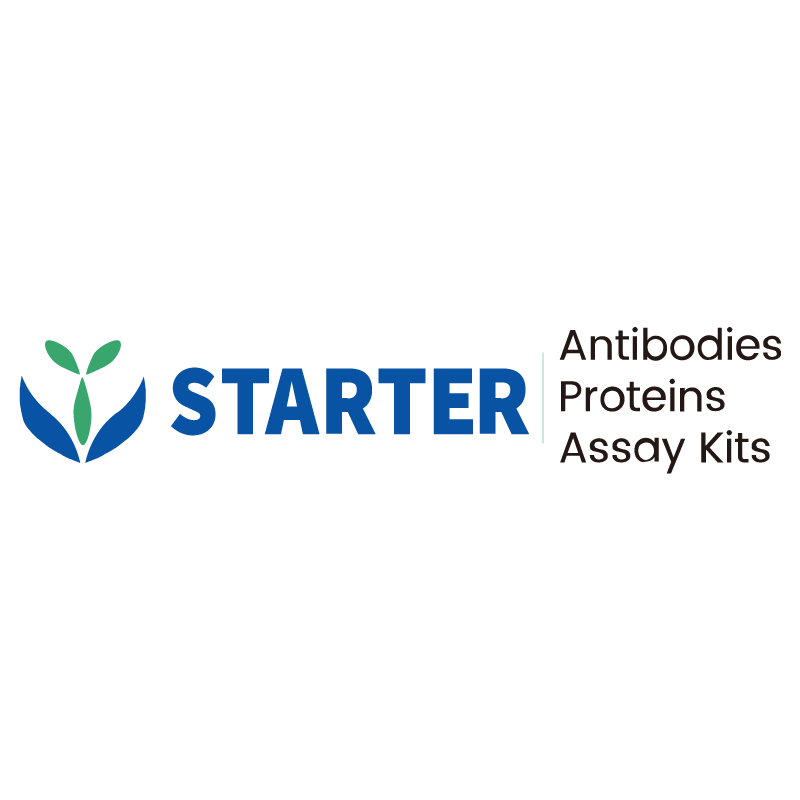WB result of ATM Recombinant Rabbit mAb
Primary antibody: ATM Recombinant Rabbit mAb at 1/1000 dilution
Lane 1: HEK-293 whole cell lysate 20 µg
Lane 2: HepG2 whole cell lysate 20 µg
Lane 3: HeLa whole cell lysate 20 µg
Lane 4: Raji whole cell lysate 20 µg
Lane 5: MCF7 whole cell lysate 20 µg
Lane 6: A549 whole cell lysate 20 µg
Secondary antibody: Goat Anti-rabbit IgG, (H+L), HRP conjugated at 1/10000 dilution
Predicted MW: 350 kDa
Observed MW: 300 kDa
Product Details
Product Details
Product Specification
| Host | Rabbit |
| Antigen | ATM |
| Synonyms | Serine-protein kinase ATM; Ataxia telangiectasia mutated (A-T mutated) |
| Immunogen | Recombinant Protein |
| Location | Nucleus |
| Accession | Q13315 |
| Clone Number | S-2178-4 |
| Antibody Type | Recombinant mAb |
| Isotype | IgG |
| Application | WB, ICC |
| Reactivity | Hu, Ms, Rt |
| Positive Sample | HEK-293, HepG2, HeLa, Raji, MCF7, A549, NIH/3T3, C6 |
| Purification | Protein A |
| Concentration | 0.5 mg/ml |
| Conjugation | Unconjugated |
| Physical Appearance | Liquid |
| Storage Buffer | PBS, 40% Glycerol, 0.05% BSA, 0.03% Proclin 300 |
| Stability & Storage | 12 months from date of receipt / reconstitution, -20 °C as supplied |
Dilution
| application | dilution | species |
| WB | 1:1000 | Hu, Ms, Rt |
| ICC | 1:50-1:100 | Hu, Ms |
Background
The ATM protein, which stands for Ataxia Telangiectasia Mutated protein, is a crucial enzyme involved in the cellular response to DNA damage. It is a serine/threonine kinase that plays a central role in initiating the DNA damage response pathway when double-strand breaks occur in the DNA. Upon activation by DNA damage signals, ATM phosphorylates a wide range of downstream targets, including key proteins like p53, BRCA1, and the MRE11-RAD50-NBS1 complex. These phosphorylation events help to trigger cell cycle arrest, allowing the cell to repair the damaged DNA, and also promote apoptosis if the damage is too severe to be repaired. Mutations in the gene encoding ATM are associated with the rare genetic disorder Ataxia Telangiectasia, which is characterized by neurological defects, immunodeficiency, and an increased risk of cancer, highlighting the essential role of ATM in maintaining genomic stability and preventing tumorigenesis.
Picture
Picture
Western Blot
WB result of ATM Recombinant Rabbit mAb
Primary antibody: ATM Recombinant Rabbit mAb at 1/1000 dilution
Lane 1: NIH/3T3 whole cell lysate 20 µg
Secondary antibody: Goat Anti-rabbit IgG, (H+L), HRP conjugated at 1/10000 dilution
Predicted MW: 350 kDa
Observed MW: 300 kDa
WB result of ATM Recombinant Rabbit mAb
Primary antibody: ATM Recombinant Rabbit mAb at 1/1000 dilution
Lane 1: C6 whole cell lysate 20 µg
Secondary antibody: Goat Anti-rabbit IgG, (H+L), HRP conjugated at 1/10000 dilution
Predicted MW: 350 kDa
Observed MW: 300 kDa
Immunocytochemistry
ICC shows positive staining in HepG2 cells. Anti-ATM antibody was used at 1/50 dilution (Green) and incubated overnight at 4°C. Goat polyclonal Antibody to Rabbit IgG - H&L (Alexa Fluor® 488) was used as secondary antibody at 1/1000 dilution. The cells were fixed with 100% ice-cold methanol and permeabilized with 0.1% PBS-Triton X-100. Nuclei were counterstained with DAPI (Blue). Counterstain with tubulin (Red).
ICC shows positive staining in NIH/3T3 cells. Anti-ATM antibody was used at 1/100 dilution (Green) and incubated overnight at 4°C. Goat polyclonal Antibody to Rabbit IgG - H&L (Alexa Fluor® 488) was used as secondary antibody at 1/1000 dilution. The cells were fixed with 100% ice-cold methanol and permeabilized with 0.1% PBS-Triton X-100. Nuclei were counterstained with DAPI (Blue). Counterstain with tubulin (Red).


